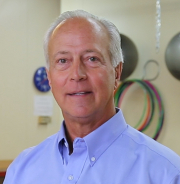PGA golfers continually strive to improve their performances. Many sports that involve rotation challenge the athlete to hit the ball harder and drive into their shot. Whether it be golf, tennis, baseball, or hockey, players continually refine their techniques and advance their training to hit the ball harder and more efficiently.
Over the past six months we have noticed in the PGA Performance Center more right handed golfers presenting with persistent right cervicodorsal symptoms. Usually a dull, nagging localized pain on the right side of the lower neck- upper back area for a right handed golfer. It commonly presents from a gradual and progressive onset. Some golfers come in for help as soon as they feel symptoms, others come in with noticeable restriction and pain when trying to swing. In all cases it is concerning since it affects the professional golfer’s capability to swing at the level necessary to play competitively.
One common element to all of the golfers that present with lower neck-upper back pain is that they develop symptoms when they are trying to maximize their swing speed with practice. Numerous swings at near maximum speeds puts an extreme demand on muscles that must decelerate the swing after impact. Rapid eccentric loading on a muscle is one of the most difficult things to train and prepare a muscle to handle. The tremendous forces placed on the cervicodorsal area at impact of a golf swing make this area vulnerable. The muscles are small and are challenged to decelerate a rotational force created by much larger muscle groups generating a great deal of power. The concern is that this problem is being found on many younger golfers whose bodies are developing and they are pushing their bodies to the limit.
If you are having symptoms of this nature you need to see a sports medicine specialist. If you are a chiropractor or physical therapist in sports medicine it is important that you reach out to high school, Junior, and college level golfers to inform them of the need for comprehensive assessment. Also to provide direction regarding training components that will inhibit this from becoming a problem that requires treatment. Especially with the fact that we are seeing this in younger golfers.

